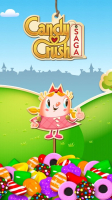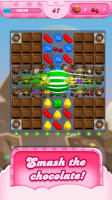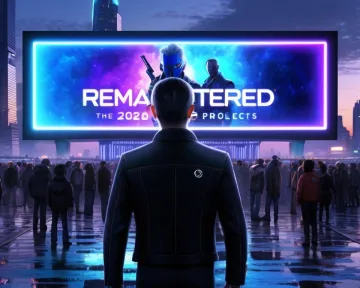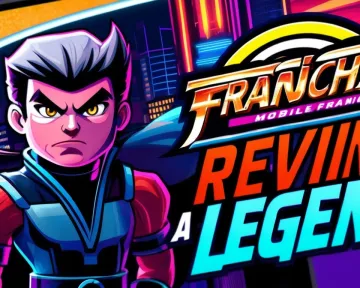





Within the realm of mobile entertainment, it's rare for a game to reach the widespread acclaim and omnipresence that Candy Crush Saga has managed to secure. Developed by King, it is a game that has, since its release in 2012, not only captivated but also retained a massive worldwide player base. It's a title that has blurred the lines between a simple pastime and an international phenomenon, having been downloaded over a billion times and played by a vast demographic that ranges from young children to senior citizens. What began as a basic match-three puzzle game has evolved into a cultural staple, consistently updated with new content to keep its audience engaged. In our exploration, we'll dig deep into the game’s complex layers, its radiant aesthetics, and the enduring influence it wields over its passionate community of players.
Engaging Match-Three Mechanics and Visual Splendor
Candy Crush Saga's gameplay rests on the well-established match-three puzzle model. As players navigate a succession of stages, each with its distinct objective, they maneuver confectionery elements across a matrix to align trios or larger clusters of identical varieties. Achieving matches results in the candies being cleared from the board and new ones falling into place, which can create a cascading effect leading to rewarding chain reactions.
The artistic flair of Candy Crush Saga stands out with its luminous, enticing confections and fanciful scenic designs that echo the enchanting allure typically found in children’s fairy tales. This is no accident, as the developers at King have carefully designed every element to be as inviting and joyful as possible to ensure that players of all ages feel welcome in this delightful confectionary world.
But it's not all sweet simplicity. As gamers advance through the levels, the game unveils special candies—like striped candies, wrapped candies, and color bombs—that provide strategic depth. Mix and match these with care, and you can clear the board much more efficiently. Power-ups and boosters can also be used to help players through particularly challenging puzzles.
The game's auditory elements further enhance the activity on screen; the soundtrack and the voice acting create an environment that captures the perfect mix of relaxation and excitement. The enchanting music, coupled with the satisfying sound effects of candy crushing and the encouraging prompts from the in-game narrator, makes for an immersive experience.
Influences on Candy Crush Saga can be sourced back to classics like Bejeweled, yet the game has managed to outshine many of its predecessors and define a genre of its own. Its influence is seen in countless imitators and successors that seek to capture just a piece of the Candy Crush magic.
Addressing the Sweeter Side's Sour Notes
Despite its impressive success, Candy Crush Saga is not devoid of criticisms. One of its most notable weaknesses is the aggressive monetization strategy, which, while not necessary to progress, can lead to a play-to-win scenario for the less patient. Lives are limited, and players must wait for them to regenerate over time unless they are willing to pay for instant replenishment. This, along with difficulty spikes in some levels, has led to some players expressing frustration over what they perceive to be artificial barriers designed to incentivize in-app purchases.
Moreover, despite the influx of fresh content on a consistent basis, certain segments of the player base feel that the game's core mechanics tend to grow monotonous over time. Those looking for a gaming experience with an evolving narrative or dynamic gameplay elements may find Candy Crush Saga lacking. For others, the simplicity is part of the allure but there's no denying that grinding through hundreds of similar puzzles isn't everyone's cup of tea.
Conclusion: Player Sentiments and Sugar-Coated Dominance
As the saga of Candy Crush continues to unfold with new levels and continual updates, the impressions it leaves on its players are as varied as the candy combinations within the game. Numerous gamers laud the game for its straightforward yet challenging mechanics, complemented by the lively imagery and memorable melodies that add an extra touch of delight to every playthrough. The intrinsic difficulty present in various stages imparts a feeling of accomplishment and gratification, enticing players to return for another round in pursuit of that ‘just one more go’ sensation. Its presence on social media platforms and the ability to play asynchronously with friends add a community aspect that many appreciate.
Conversely, the monetization strategy has undoubtedly left a sour taste in some players' mouths. The fine line between challenging and frustrating is one that Candy Crush Saga doesn't always balance perfectly, leading to a segment of the player base voicing their grievances regarding the perceived necessity to spend money to proceed at a reasonable pace.
Despite such criticisms, Candy Crush Saga serves as a shining example of the compelling nature of meticulously designed casual gaming experiences. It endears itself to a broad audience by delivering immediate fun in bite-size gaming sessions, something that more complicated titles can sometimes lose in translation. As a harbinger of the match-three puzzle genre, its success is a clear indication that there's something magical within its colorful world of candies—an addictive quality that keeps players, new and old, crushing candies day after day.











